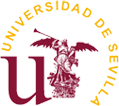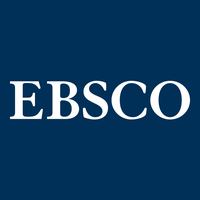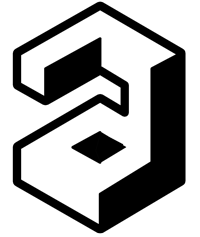Factores cognitivos, mórbidos y premórbidos en la formación y sustento de la creencia en lo paranormal
DOI:
https://doi.org/10.55414/1jvmcc11Palabras clave:
Creencia en lo paranormal, Factores cognitivos, mórbidos y premórbidos, Teoría de la compensación de necesidades (Russell y Jones, 1980) , Estudio empíricoResumen
La literatura muestra una amplia gama de teorías y factores contribuyentes a la formación y mantenimiento de creencias paranormales. En este estudio analizamos una serie de variables relacionadas con las principales explicaciones propuestas en una muestra de 184 sujetos: esquizotipia (rxy=0’23, p<0’001), experiencias inusuales (rxy=0,37, p<0,001), anhedonia introvertida (rxy=0’28, p<0’001), habilidad de razonamiento condicional en tareas con contenido paranormal (rxy=0’23, p=0’001), necesidad de afiliación (rxy=0’21, p=0’002) y vivencia de experiencias extraordinarias subjetivas (rxy=0’35, p<0’001) correlacionaron significativamente con la creencia en lo paranormal. Los resultados son consistentes con la teoría de la compensación de necesidades de Russell y Jones (1980) e indican que la ideología puede aparecer asociada a signos premórbidos y/o ser consecuencia de psicopatología. Sin embargo, sugieren que la creencia en lo paranormal puede no ser consecuencia de una deficiencia de razonamiento probabilístico y/o condicional. Se sugiere un modelo integrador basado en el feedback entre creencia y experiencia.
Descargas
Referencias
Andrés Pueyo, A., Teixeira do Carmo, J. y Álvarez López, E. (2001). Creencias y experiencias paranormales en esquizotipia. Revista de Psicología Universitas Tarraconensis, 23(1-2), 132-148.
Avci, A., Bozgeyikli, H. y Kesici, S. (2017). Psychological Needs as the Predictor of Teachers’ Perceived Stress Levels. Journal of Education and Training Studies, 5(4), 154-164 [DOI:10.11114/jets.v5i4.2274].
Bader, C., Day, E. y Gordon, A. (2017). Paranormal America 2017 Chapman University Survey of American Fears 2017.
Berkowski, M. y MacDonald, D.A. (2014). Childhood Trauma and the Development of Paranormal Beliefs. The Journal of Nervous and Mental Disease. 202(4), 305-312 [DOI: 10.1097/NMD.0000000000000123].
Blackmore, S. (1997). Probability misjudgment and belief in the paranormal: A newspaper survey. British Journal of Psychology, 88(4), 683-689 [DOI: 10.1111/j.2044-8295.1997.tb02665.x].
Blackmore, S. y Troscianko, T. (1985). Belief in the paranormal: Probability judgments, illusory control, and the “chance baseline shift”. British Journal of Psychology, 76(4), 459-468 [DOI: 10.1111/j.2044-8295.1985.tb01969.x].
Britton, W.B. y Bootzin, R.R. (2004). Near-Death Experiences and the Temporal Lobe. Psychological Science 15(4), 254-258 [DOI: 10.1111/j.0956-7976.2004.00661.x].
Brugger, P., Gamma, A, Muri, R., Schäfer, M. y Taylor, K.I. (1993). Functional Hemispheric Asymmetry and Belief in ESP: Towards a “Neuropsychology of Belief”. Perceptual and Motor Skills, 77(3), 1299-1308 [DOI: 10.2466/pms.1993.77.3f.1299].
Buchy, L., Woodward, T.S. y Liotti, M. (2007). A cognitive bias against disconfirmatory evidence (BADE) is associated with schizotypy. Schizophrenia Research, 90(1-3), 334-337 [DOI: 10.1016/.schres.2006.11.012].
Castro, M., Burrows, R. y Wooffitt, R. (2014). The Paranormal is (Still) Normal: The Sociological Implications of a Survey of Paranormal Eexperiences in Great Britain. Sociological Research Online, 19(3), 16 [DOI: 10.5153/sro.3355].
Dagnall, N., Denovan, A., Drinkwater, K. Parker, A. y Clough, P.J. (2016). Toward a Better Understanding of the Relationship between Belief in the Paranormal and Statistical Bias: The Potential Role of Schizotypy. Frontiers in Psychology, 7, 1045 [DOI: 10.3389/fpsyg.2016.01045].
Dagnall, N., Denovan, A., Drinkwater, K., Parker, A. y Clough, P.J. (2017). Urban Legends and Paranormal Beliefs: The Role of Reality Testing and Schizotypy. Frontiers in Psychology, 8, 942 [DOI: 10.3389/fpsyg.2017.00942].
Dagnall, N., Drinkwater, K., Parker, A. y Munley, G. (2010). Reality Testing, Belief in the Paranormal, and Urban Legends. European Journal of Parapsychology 25, 25-55.
Dagnall, N., Drinkwater, K., Parker, A., & Rowley, K. (2014). Misperception of Chance, Conjunction, Belief in the Paranormal and Reality Testing: A Reappraisal. Applied Cognitive Psychology, 28(5), 711-719 [DOI: 10.1002/acp.3057].
Dagnall, N., Parker, A. y Munley, G. (2007).Paranormal belief and reasoning. Personality and Individual Differences, 43(6), 1406-1415 [DOI: 10.1016/j.paid.2007.04.017].
Denovan, A., Dagnall, N., Drinkwater, K. y Parker, A. (2018). Latent Profile Analysis of Schizotypy and Paranormal Belief: Associations with Probabilistic Reasoning Performance. Frontiers in Psychology, 9, 35 [DOI: 10.3389/fpsyg.2018.00035].
Drinkwater, K., Dagnall, N., Grogan, S. y Riley, V. (2017). Understanding the Unknown: A Thematic Analysis of Subjective Paranormal Experiences. Australian Journal of Parapsychology, 17(1), 23-46.
Fitzpatrick, O.D. y Shook, S L. (1994). Belief in the paranormal: Does identity development during the college years make a difference? An initial investigation. Journal of Parapsychology, 58(3), 315-329.
French, C.C. (1992). Factors underlying belief in the paranormal: Do sheep and goats think differently? The Psychologist, 5, 295-299.
Friedman, B.A. y Mandel, R.G. (2011).Motivation predictors of college student academic performance and retention. Journal of College Student Retention: Research, Theory and Practice, 13(1), 1-15 [DOI: 10.2190/CS.13.1.a].
Garrett, B.M. y Cutting, R.L. (2017). Magical beliefs and discriminating science from pseudoscience in undergraduate professional students. Heliyon, 3(11), e00433 [DOI: 10.1016/j.heliyon.2017.e00433].
Goulding, A. (2004). Schizotypy models in relation to subjective health and paranormal beliefs and experiences. Personality and Individual Differences, 37(1), 157-167 [DOI: 10.1016/j.paid.2003.08.008].
Goulding, A. (2005). Healthy schizotypy in a population of paranormal believers and experients. Personality and Individual Differences, 38(5), 1069-1083 [DOI: 10.1016/j.paid.2004.07.006]
Glicksohn, J. (1990). Belief in the paranormal and subjective paranormal experience. Personality and Individual Differences, 11(7), 675-683 [DOI: 10.1016/0191-8869(90)90252-M].
Heckert, T.M., Cuneio, G., Hannah, A.P., Adams, P.J., Droste, H.E., Mueller, M.A., Wallis, H.A., Griffin, C.M. y Roberts, L.L. (2000) Creation of a new Needs Assessment Questionnaire. Journal of Social Behaviour & Personality, 15(1), 121-136.
Hergovich, A., Schott, R. y Arendasy, M. (2008). On the relationship between paranormal belief and schizotypy among adolescents. Personality and Individual Differences, 45(2), 119-125 [DOI: 10.1016/j.paid.2008.03.005].
Hergovich, A., Willinger, U. y Arendasy, M. (2005). Paranormal Belief, Schizotypy, and Body Mass Index. Perceptual and Motor Skills, 100(3), 883-891 [DOI: 10.2466/pms.100.3.883-891].
Irwin, H. J. (1993). Belief in the paranormal: A review of the empirical literature. Journal of the American Society for Psychical Research, 87(1), 1-39.
Irwin, H.J. (2003). Reality testing and the formation of paranormal beliefs. European Journal of Parapsychology, 18, 15-27.
Irwin, H.J. (2009). The Psychology of Paranormal Belief. A Researcher’s Handbook. Hertfordshire: University of Hertfordshire Press.
Irwin, H.J., Dagnall, N. y Drinkwater, K. (2013). Parapsychological experience as anomalous experience plus paranormal attribution: A questionnaire based on a new approach to measurement. Journal of Parapsychology, 77(1), 39-53.
Lange, R. y Thalbourne, M.A. (2002). Rasch Scaling Paranormal Belief and Experience: Structure and Semantics of Thalbourne’s Australian Sheep-Goat Scale. Psychological Reports, 91(3), 1065-1073 [DOI: 10.2466/pr0.2002.91.3f.1065].
Lawrence, T.R. (1995a). How many factors of paranormal belief are there? A critique of the Paranormal Belief Scale. The Journal of Parapsychology, 59(1), 3-25.
Lawrence, T.R. (1995b). Moving on from the Paranormal Belief Scale: A Final Reply to Tobacyk. The Journal of Parapsychology, 59(2), 131-140.
Lawrence, T.R., Roe, C. y Kani, K. (1997). Confirming the factor structure of the Paranormal Beliefs Scale: Big orthogonal seven or oblique five? The Journal of Parapsychology, 61(1), 13-31.
Markovsky, B. (2008). “The Paranormal and the Politics of Truth: A Sociological Account”, by Jeremy Northcote. Contemporary Sociology: A Journal of Reviews, 37(5), 451-452 [DOI: 10.1177/009430610803700529].
Mason, O., Linney, Y. y Claridge, G. (2005). Short scales for measuring schizotypy. Schizophrenia Research, 78(2-3), 293-296 [DOI: 10.1016/j.schres.2005.06.020].
Mason, O., Claridge, G. y Jackson, M. (1995). New Scales for the assessment of Schizotypy. Personality and Individual Differences, 18(1), 7-13 [DOI: 10.1016/0191-8869(94)00132-C].
Moritz, S. y Woodward, T.S. (2005). Jumping to conclusions in delusional and non-delusional schizophrenic patients. British Journal of Clinical Psychology, 44(2), 193-207 [DOI: 10.1348/014466505X35678].
O’Keefe, D.J. (2003).Against Familywise Alpha Adjustment. Human Communication Research, 29(3), 431-447 [DOI: 10.1111/j.1468-2958.2003.tb00846.x].
Parra, A. (2010). Indicadores de propensión a la esquizotipia entre individuos creyentes en lo paranormal: examinando la intensidad de la imaginería, esquizotipia y experiencias alucinatorias. Psicologia: Teoria E Prática, 12(3), 78-94.
Pekala, R.J. (1991). The Phenomenology of Consciousness Inventory. En R.J. Pekala, Quantifying Consciousness (pp. 127-143). Nueva York: Plenum Press [DOI: 10.1007/978-1-4899-0629-8_8].
Perkins, S.L. y R. Allen. (2006). Childhood Physical Abuse and Differential Development of Paranormal Belief Systems. The Journal of Nervous and Mental Disease. 194(5), 349-355 [DOI: 10.1097/01.nmd.0000217832.85665.c5].
Persinger M.A. (1984). People who report religious experiences may also display enhanced temporal-lobe signs. Perceptual and Motor Skills, 58(3), 963-975 [DOI: 10.2466/pms.1984.58.3.963].
Pizzagalli, D., Lehmann, D. y Brugger, P. (2001). Lateralized Direct and Indirect Semantic Priming Effects in Subjects with Paranormal Experiences and Beliefs. Psychopathology, 34(2), 75-80 [DOI: 10.1159/000049284].
Rabeyron, T. y Watt, C. (2010). Paranormal experiences, mental health and mental boundaries, and psi. Personality and Individual Differences, 48(4), 487-492 [DOI: 10.1016/j.paid.2009.11.029].
Rattet, S.L. y Bursik, K. (2001). Investigating the personality correlates of paranormal belief and precognitive experience. Personality and Individual Differences, 31(3), 433-444 [DOI: 10.1016/S0191-8869(00)00148-3].
Roe, C.A. y Morgan, C.L. (2002). Narcissism and Belief in the Paranormal. Psychological Reports, 90(2), 405-411 [DOI: 10.2466/pr0.2002.90.2.405].
Rogers, P., Davis, T. y Fisk, J. (2009). Paranormal Belief and Susceptibility to the Conjunction Fallacy. Applied Cognitive Psychology, 23(4), 524-542 [DOI: 10.1002/acp.1472].
Rogers, P., Fisk, J.E. y Lowrie, E. (2016). Paranormal Believers’ Susceptibility to Confirmatory Versus Disconfirmatory Conjunctions. Applied Cognitive Psychology, 30(4), 628-634 [DOI: 10.1002/acp.3222].
Rogers, P., Fisk, J.E. y Wiltshire, D. (2011). Paranormal Belief and the Conjunction Fallacy: Controlling for Temporal Relatedness and Potential Surprise Differentials in Component Events. Applied Cognitive Psychology, 25(5), 692-702 [DOI: 10.1002/acp.1732].
Rogers, P., Qualter, P. y Wood, D. (2016). The impact of event vividness, event severity, and prior paranormal belief on attributions towards a depicted remarkable coincidence experience: Two studies examining the misattribution hypothesis. British Journal of Psychology 107(4), 710-751 [DOI: 10.1111/bjop.12173].
Rose, G. y Barker, D.J.P. (1978). Epidemiology for the uninitiated. What is a case? Dichotomy or continuum. British Medical Journal, 6141, 873-874 [DOI: 10.1136/bmj.2.6141.873].
Rosenberg, M. (1965). Society and the adolescent self-image. Princeton, NJ: Princeton University Press.
Rubio Larrosa, V. y Pérez Urdaniz, A. (2004). Trastornos de la personalidad. Madrid: Elsevier.
Russell, D. y Jones, W.H. (1980). When Superstition Fails: Reactions to Disconfirmation of Paranormal Beliefs. Personality and Social Psychology Bulletin, 6(1), 83-88 [DOI: 10.1177/014616728061012].
Sellen, J.L., Oaksford, M. y Gray, N.S. (2005). Schizotypy and Conditional Reasoning. Schizophrenia Bulletin, 31(1), 105-116 [DOI: 10.1093/schbul/sbi012].
Schmied-Knittel, I. y Schetsche, M.T. (2005). Everyday Miracles. Results of a Representative Survey in Germany. European Journal of Parapsychology 20(1), 3-21.
Schulter, G. y Papousek, I. (2008). Believing in paranormal phenomena: Relations to asymmetry of body and brain. Cortex, 44(10), 1326-1335 [DOI: 10.1016/j.cortex.2007.08.022].
Shiah, Y.J., Wu, Y.Z., Chen, Y.H. y Chiang, S.K. (2014). Schizophrenia and the paranormal: More psi belief and superstition, and less déjà vu in medicated schizophrenic patients. Comprehensive Psychiatry 55(3), 688-992 [DOI: 10.1016/j.comppsych.2013.11.003].
Shorkey, C.T. y Whiteman, V. (1978). The Rational Behavior Inventory. Princeton, NJ: Educational Testing Service.
Silber, E. y Tippett, J. (1965). Self-esteem: Clinical assessment and measurement validation. Psychological Reports, 16 (suplemento monográfico 4), 1017-1071 [DOI: 10.2466/pr0.1965.16.3c.1017].
Simmonds-Moore, C., Rice, D.L., O’Gwin, C. y Hopkins, R. (2019). Exceptional Experiences Following Exposure to a Sham “God Helmet”: Evidence for Placebo, Individual Difference, and Time of Day Influences. Imagination, Cognition and Personality, 39(1), 44-87 [DOI: 10.1177/0276236617749185].
Smith, D. (2009). Pseudoscience and Extraordinary Claims of the Paranormal: A Critical Thinker’s Toolkit. Londres: Wiley-Blackwell.
Tabachnick, B.G. y Fidell, L.S. (2013). Using Multivariate Statistics. Pearson, Boston.
Tobacyk, J.J. (1995a). What is the Correct Dimensionality of Paranormal Beliefs? A reply to Lawrence’s Critique of the Paranormal Belief Scale. The Journal of Parapsychology, 59(1), 27-46.
Tobacyk, J.J. (1995b). Final Thoughts on Issues in the Measurement of Paranormal Beliefs. The Journal of Parapsychology, 59(2), 141-145.
Tobacyk, J.J. (2004). A Revised Paranormal Belief Scale. The International Journal of Transpersonal Studies, 23(1), 94-98 [DOI: 10.24972/ijts.2004.23.1.94].
Tobacyk, J.J. y Milford, G. (1983). Belief in Paranormal Phenomena: Assessment Instrument Development and Implications for Personality Functioning. Journal of Personality and Social Psychology, 44(5), 1029-1037 [DOI: 10.1037/0022-3514.44.5.1029].
Tobacyk, J.J. y Mitchell, T. E. (1987). Out-of-Body Experience Status as a Moderator of Effects of Narcissism on Paranormal Beliefs. Psychological Reports, 60(2), 440-442 [DOI: 10.2466/pr0.1987.60.2.440].
Tobacyk, J.J. y Thomas, A. (1997). How the big orthogonal seven is really the oblique seven. The Journal of Parapsychology, 61(4), 337-342.
Truzzi, M. (1971). Definition and dimensions of the occult: Towards a sociological perspective. The Journal of Popular Culture, 5(3), 635-646 [DOI: 10.1111/j.0022-3840.1971.0503_635.x].
Wackermann, J. y Allefeld, C. (2007). On the meaning and interpretation of global descriptors of brain electrical activity. Including a reply to X. Pei et al. International Journal of Psychophysiology, 64(2), 199-210 [DOI: 10.1016/j.ijpsycho.2007.02.003].
Wierzbicki, M. (1985). Reasoning errors and belief in the paranormal. The Journal of Social Psychology, 125(4), 489-494 [DOI: 10.1080/00224545.1985.9713529].
Woods, C. y Wooffitt, R. (2014). Telling the moment: Seeing a UFO. Narrative Inquiry, 24(2), 239-258 [doi:10.1075/ni.24.2.04woo]
Descargas
Publicado
Número
Sección
Licencia
Derechos de autor 2020 APUNTES DE PSICOLOGÍA

Esta obra está bajo una licencia internacional Creative Commons Atribución-NoComercial-SinDerivadas 4.0.

























